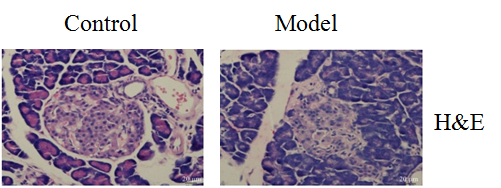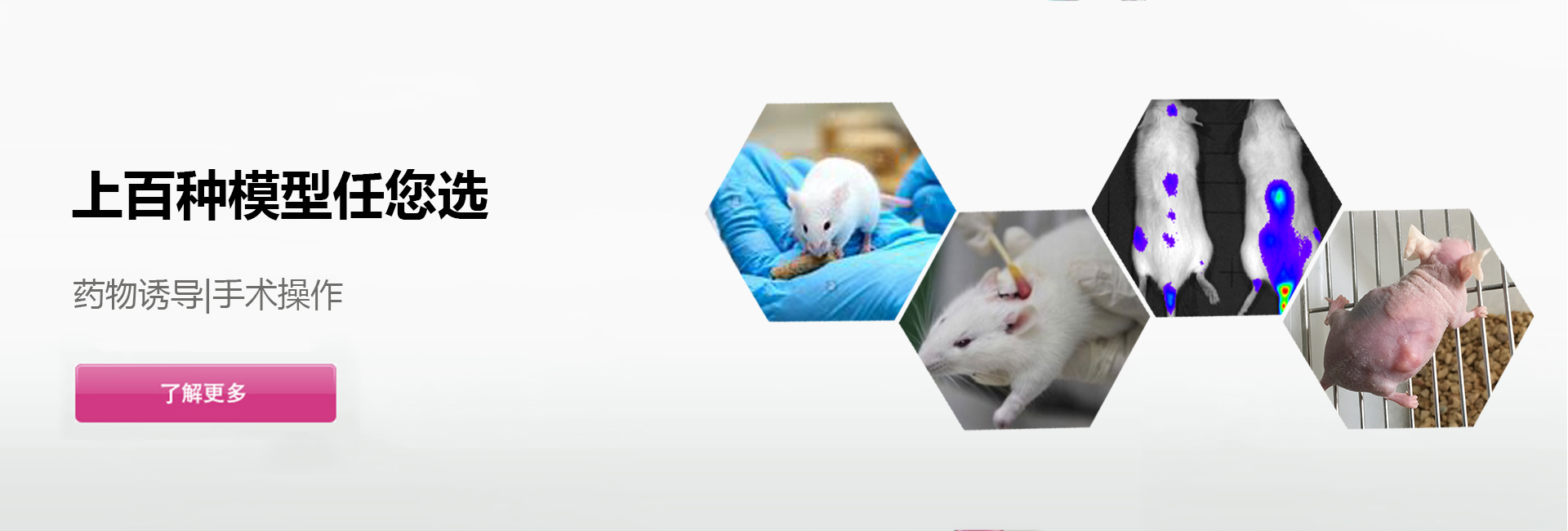Disease model | Modeling approach | Animal strains | Measurements |
Type II diabetes rat model (T2DM-rat ) | High fat diet +STZ injection | SD/Wistar rat | FBG ≥11.1mmol/L or RBG≥16.7mmol/L |
Type I diabetes rat model (T1DM-rat) | STZ injection | SD/Wistar rat | FBG ≥11.1mmol/L or RBG≥16.7mmol/L |
Diabetic nephropathy rat model (DN-rat) | Left kidney ligation +STZ injection | SD/Wistar rat | RBG≥16.7mmol/L;UGLU≥+++; UPRO≥20mg/L |
Non-alcoholic steatohepatitis rat model (NASH-rat) | High fat diet | SD/Wistar rat | ALT、AST increased sigfificangtly; Liver histopathological changes |
Diet Induced Obese rat model (DIO-rat) | High fat diet | SD/Wistar rat | Increased body weight and adiposity, circulating glucose, cholesterol, triglyceride, insulin, and leptin levels in DIO rats were significantly higher than those in the lean controls |
Induced Model of Systemic Lupus Erythematosus (SLE) | Intraperitoneally injected with pristane | BALB/c mouse | Severe proteinuria and nephritis; Production of ANA and anti-dsDNA and anti-Sm; production of IFNα and ß; T cell, B cell changes; Renal histopathological observation |
MRL/lpr systemic lupus erythematosus | Spontaneous model | MRL/lpr mouse |
Goiter rat model | oral administration of propylthiouracil | SD/Wistar rat | the serum levels of T3 and T4 were decreased, TSH were increased |
TOPBIOTECH can provide customized animal disease model services according to the needs of customers |
Case analysis Type II diabetes rat model
Type II diabetes is increasing in prevalence worldwide, and it is strongly associated with obesity and insulin resistance, as well as defects in pancreatic β-cell function and mass. Although the broad outlines of the disease etiology are known, many critical questions remain to be answered. In order to further elucidate the pathobiology of this disease, animal models mimicking the pathology of human type 2 diabetes are of great value.
Experimental animal information |
Name of animal model | Type II diabetes rat model |
Species and strains of animal | SD rat |
Gender of animal | ♂ |
Age of animal | adult |
Weight of animal | 180~220g |
Caracteristics
Compared with the control group, blood glucose increased, serum triglycerides (TG), cholesterol (TC), low-density lipoprotein (ldl-c), high-density lipoprotein (hdl-c), free fatty acid (FFA), glycosylated hemoglobin (HbA1c) increased, and insulin decreased significantly.The pancreatic and renal tissues showed different degrees of pathological changes.
Partial result display




